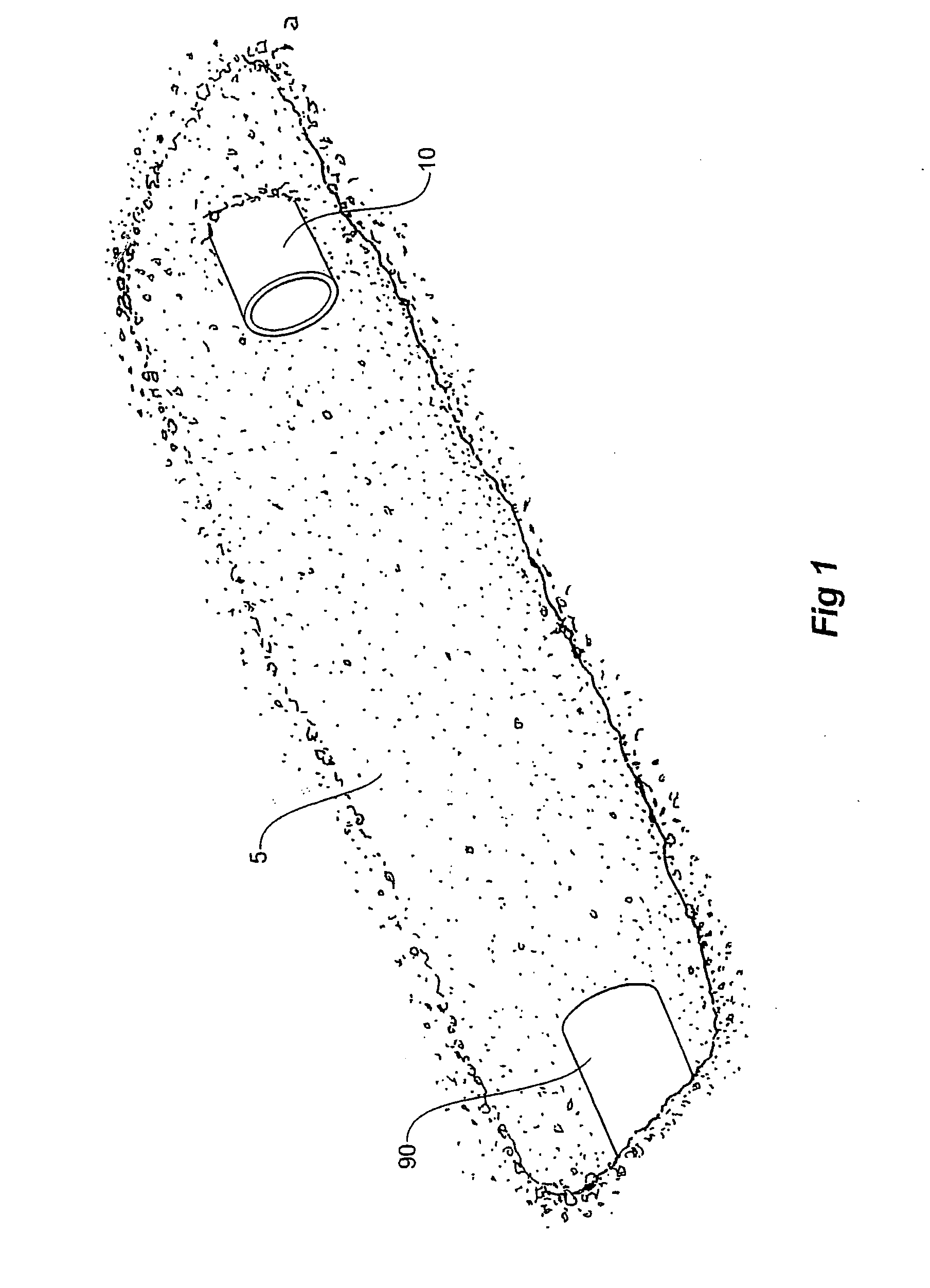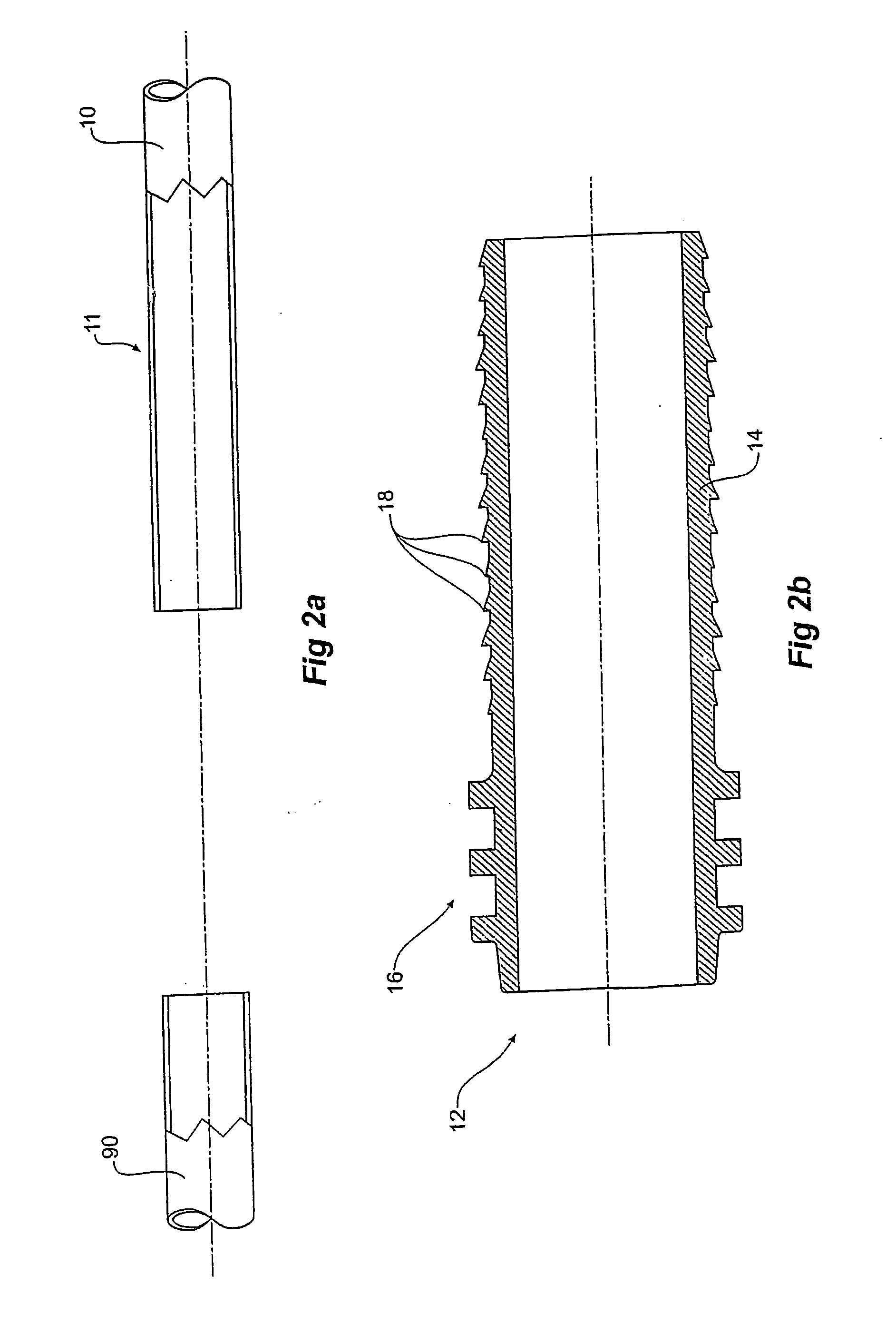Slip type pipe joint
a pipe joint and axial movement technology, applied in the direction of pipe/joint/fitting, non-disconnectible pipe joints, adjustable joints, etc., can solve the problems of pipe moving axially away, pipe being too short, and difficulties in making repairs and modifications to existing rural piping systems
- Summary
- Abstract
- Description
- Claims
- Application Information
AI Technical Summary
Problems solved by technology
Method used
Image
Examples
Embodiment Construction
[0023]A preferred embodiment of the invention is illustrated in the accompanying representations in which:
[0024]FIG. 1 shows a trench exposing pipe ends ready to be joined by a pipe fitting.
[0025]FIG. 2a shows the pipe ends of FIG. 1 in a cutaway cross-sectional view.
[0026]FIG. 2b shows a cross-sectional view of a first insert for insertion into a pipe end.
[0027]FIG. 3 shows the first insert of FIG. 2b and a second insert inserted into the pipe ends of FIG. 1 and FIG. 2a.
[0028]FIGS. 4 and 5 show a slip type pipe joint according to the invention in progressive stages of assembly.
[0029]FIG. 6 is an enlarged view of the slip type pipe joint of FIG. 5.
[0030]FIG. 7 is a cross-sectional view showing the components of the slip type pipe joint of FIG. 6.
[0031]FIGS. 8, 9 and 10 show the slip type pipe joint of FIG. 6 at progressive stages of assembly; while
[0032]FIGS. 11 and 12 show an alternative embodiment of the invention.
[0033]Referring to FIGS. 1 and 2a, two spaced apart polymeric pipe...
PUM
 Login to View More
Login to View More Abstract
Description
Claims
Application Information
 Login to View More
Login to View More - R&D
- Intellectual Property
- Life Sciences
- Materials
- Tech Scout
- Unparalleled Data Quality
- Higher Quality Content
- 60% Fewer Hallucinations
Browse by: Latest US Patents, China's latest patents, Technical Efficacy Thesaurus, Application Domain, Technology Topic, Popular Technical Reports.
© 2025 PatSnap. All rights reserved.Legal|Privacy policy|Modern Slavery Act Transparency Statement|Sitemap|About US| Contact US: help@patsnap.com



